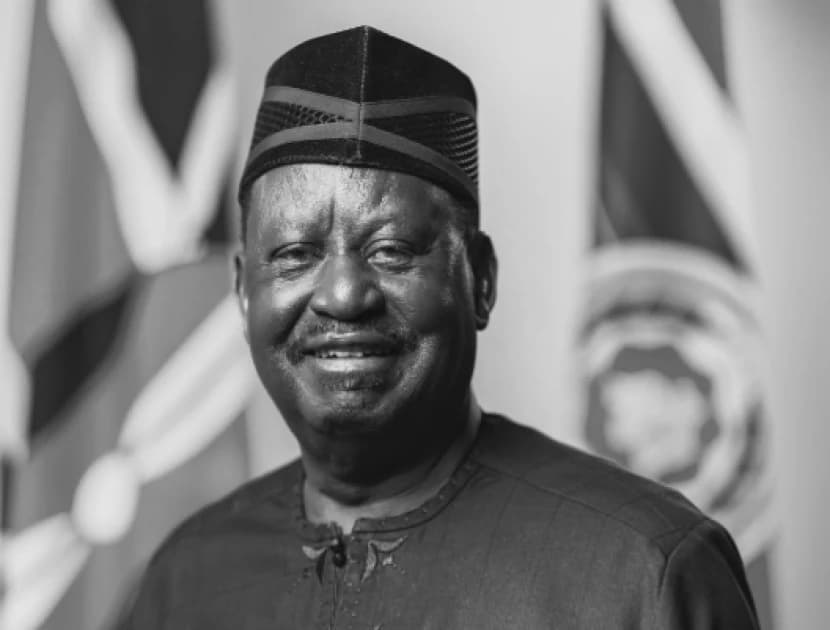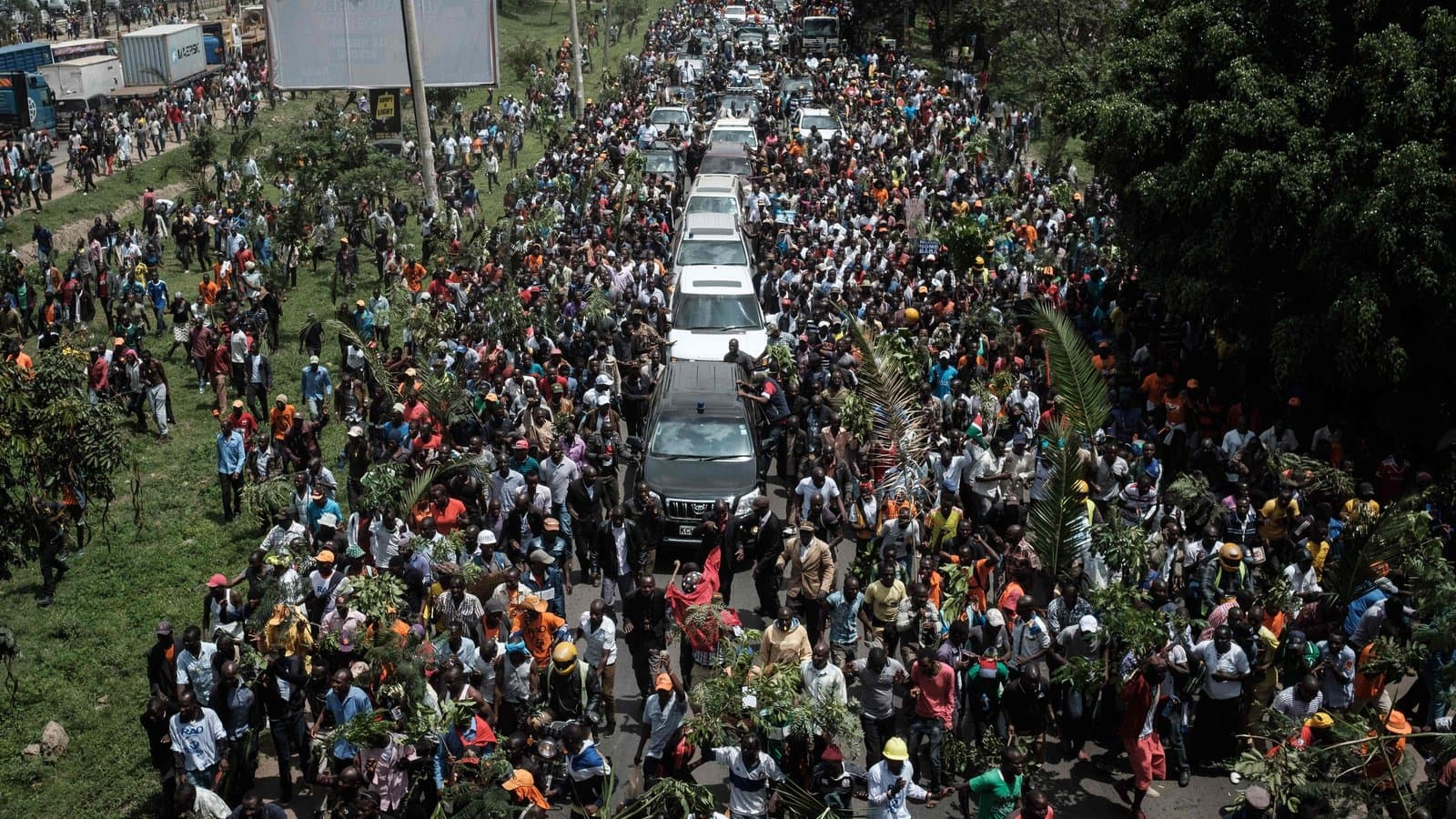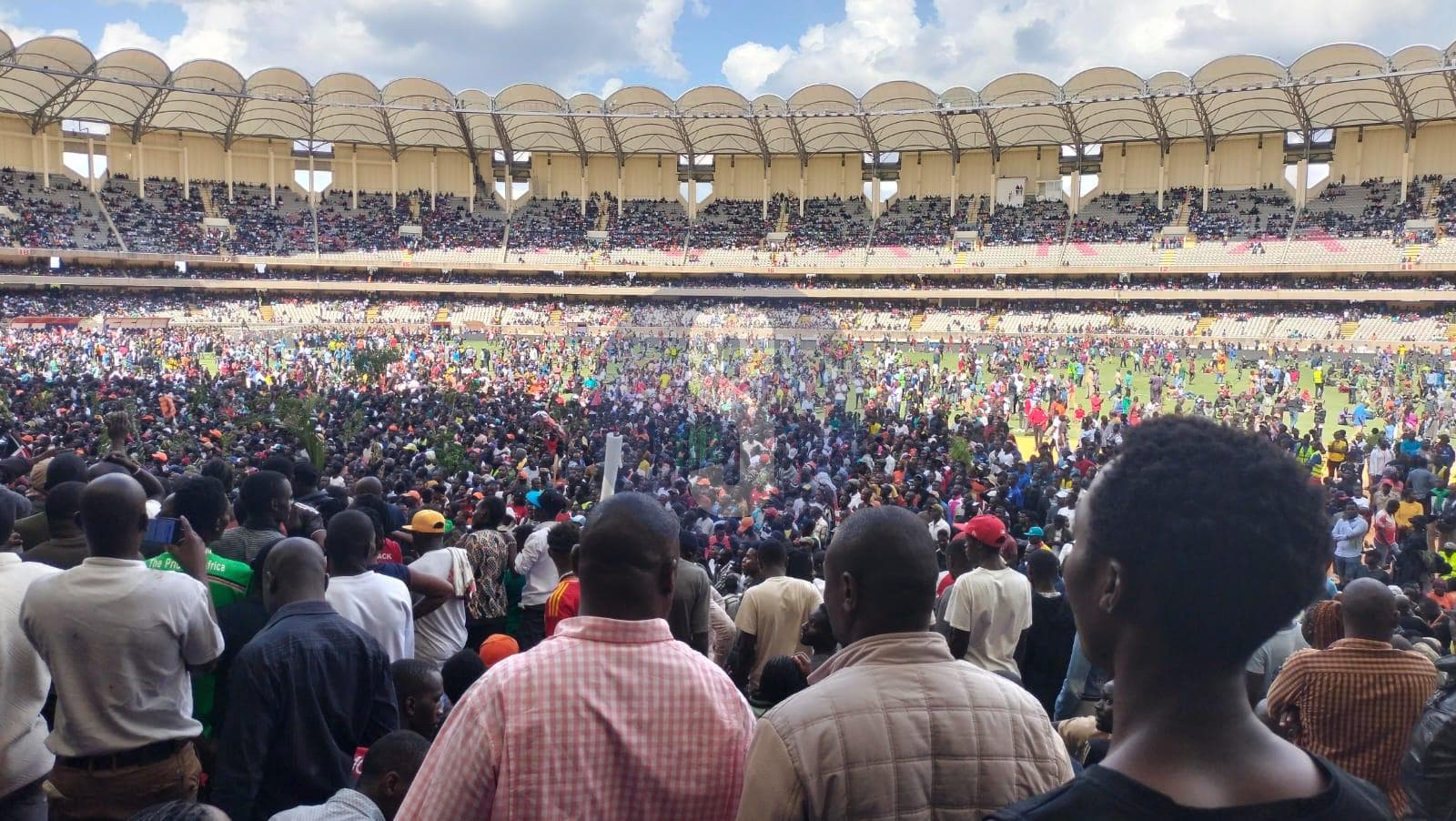Chaos And Stampede During Rt Hon. Raila's Body Viewing

The nation mourned the passing of veteran opposition stalwart Raila Amollo Odinga on October 15, 2025, but what followed during the public display of his remains turned into scenes of disorder, panic and heartbreak. The troubles began early at Jomo Kenyatta International Airport (JKIA),the body of Raila Odinga arrived aboard from a chartered flight from India. As mourners thronged the airport precincts, some broke through VIP gates and gained access to the restricted airside.
Security forces, including the Kenya Defence Forces, military and police, attempted to restore order, creating human barriers around the coffin. But the crowd was overwhelming. Some mourners scaled walls, others flooded into places normally reserved for officials. Airport operations were halted for about two hours amid the upheaval. The scheduled ceremonial reception was disrupted as mourners clamored to view the body, forcing authorities to abandon parts of the original plan.

Originally, the national Parliament precincts had been slated as the venue for the public “lying in state” viewing. But by mid-morning, tension and overflows of mourners forced a dramatic change of plan. Hundreds of people attempted to breach the perimeter of Parliament, chanting slogans, scaling walls and overwhelming security barriers. Lawmakers such as Babu Owino and others tried to calm the crowd, but in vain.
In response, the public viewing was relocated to the Moi International Sports Centre, Kasarani a venue capable of handling far larger numbers. Traffic was diverted and mourners were instructed to proceed to Kasarani instead of Parliament. At Kasarani Stadium, the atmosphere quickly turned volatile. As dignitaries and officials were to view the coffin, sections designated for them became flashpoints. Police fired teargas to disperse mourners trying to force entry into privileged areas. The teargas caused panic and a stampede erupted, particularly at the stadium gates. In the chaos, several people were injured, though exact numbers have not been confirmed. Witnesses say commands like “Get Out!” rang out amid the scramble for safety.

The scenes at JKIA, Parliament and the stadium raised serious concerns about crowd control, planning and the safety of mourners. Humanitarian agencies, including the Kenya Red Cross, deployed teams along procession routes and at the stadium to attend to those injured. Officials defended the venue change and adjustments as necessary given the overwhelming turnout. Still, critics say the disruption reflects a failure of logistics, coordination and contingency planning in a high-stakes national event. The national funeral committee maintained that the overall funeral program would proceed as scheduled, despite the disruptions.
Kenya is grappling not only with the loss of a towering political figure but also with the implications of a public mourning that spiraled into disorder. The outpouring of emotion from thousands of mourners across ethnic, political and social lines speaks to Raila Odinga’s enduring resonance in the country’s politics. Yet the chaos also underscores the dangers when security, crowd control and logistical planning fall short. In a deeply polarized political environment, such scenes risk fueling speculation, mistrust and allegations of state failure. As the nation moves to the funeral rites in Bondo and further public viewings in Kisumu, authorities face a test: to honor a leader’s legacy while ensuring that mourning does not devolve into tragedy.

